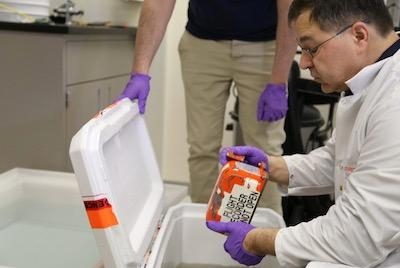Thu, Mar 07, 2019
Recovers Flight Data Recorder From The Aircraft Under Challenging Conditions
?Engineers at the NTSB’s Office of Research and Engineering Vehicle Recorder Division have completed the initial review of the Atlas Air Flight 3591 cockpit voice recorder Saturday evening and recovered the airplane’s flight data recorder Sunday.

Three people (the two pilots for the flight and a non-revenue jump-seat pilot) were fatally injured when Atlas Air Flight 3591, a Boeing 767-300 cargo jet, crashed in the muddy marshland of Trinity Bay Feb. 23, 2019, about 40 miles from Houston’s George Bush Intercontinental Airport. The airplane was destroyed. The airplane was carrying cargo for Amazon.com Inc., and the US Postal Service from Miami to Houston.
The condition of the accident site made locating the recorders challenging, the Board said.
Directors from the Office of Research and Engineering and the Office of Aviation Safety conducted an audition of the CVR as part of the NTSB’s ongoing investigation of the accident. The audition revealed the following information, which is preliminary and subject to change as the investigation continues:
- The length of the recording is approximately two hours and was obtained from a download of a solid-state type cockpit voice recorder.
- The recording included the final portion of the flight; however, the quality of the audio is poor.
- There are times during the recording when the content of crew discussion is difficult to determine, at other times the content can be determined using advanced audio filtering.
- The crew was in communication with air traffic control and were being provided radar vectors for the runway 26L approach into George Bush Intercontinental Airport.
- Crew communications consistent with a loss control of the aircraft began approximately 18 seconds prior to the end of the recording.
The flight data recorder arrived at the NTSB’s Recorder Lab Sunday at 11:45 p.m. The memory module was disassembled, cleaned and dried, and download of the data was achieved Monday afternoon. Initial review of the data revealed:
- The accident flight was captured, and the FDR contained a total of about 54 hours of data from 17 flights.
- There were approximately 350 parameters recorded by the FDR detailing the motion of the aircraft and operation of its engines, flight controls and other systems.
- NTSB recorder investigators are currently verifying and validating the FDR data, and the NTSB plans to provide a summary in an investigative update in a few days.

Technical experts in the CVR group will convene in the coming week to review the entire recording and produce a transcript of the accident recording. It will be a time-consuming process to complete the transcript.
The CVR group is one of the seven investigative groups established by the Investigator-in-Charge for the accident investigation.
(Images provided with NTSB news release)
More News
19-Year-Old Pilot Was Attempting to Fly Solo to All Seven Continents On his journey to become the first pilot to land solo on all seven continents, 19-year-old Ethan Guo has hit a >[...]
From 2017 (YouTube Edition): A Quality LSA For Well Under $100k… Aeroprakt unveiled its new LSA at the Deland Sport Aviation Showcase in November. Dennis Long, U.S. Importer>[...]
Hazardous Weather Information Summary of significant meteorological information (SIGMET/WS), convective significant meteorological information (convective SIGMET/WST), urgent pilot>[...]
Aero Linx: Historic Aircraft Association (HAA) The Historic Aircraft Association (HAA) was founded in 1979 with the aim of furthering the safe flying of historic aircraft in the UK>[...]
"We would like to remember Liam not just for the way he left this world, but for how he lived in it... Liam was fearless, not necessarily because he wasn't afraid but because he re>[...]
 TikToker Arrested After Landing His C182 in Antarctica
TikToker Arrested After Landing His C182 in Antarctica Classic Aero-TV: Versatile AND Practical - The All-Seeing Aeroprakt A-22 LSA
Classic Aero-TV: Versatile AND Practical - The All-Seeing Aeroprakt A-22 LSA ANN's Daily Aero-Term (06.27.25): Hazardous Weather Information
ANN's Daily Aero-Term (06.27.25): Hazardous Weather Information ANN's Daily Aero-Linx (06.27.25)
ANN's Daily Aero-Linx (06.27.25) Aero-News: Quote of the Day (06.27.25)
Aero-News: Quote of the Day (06.27.25)




